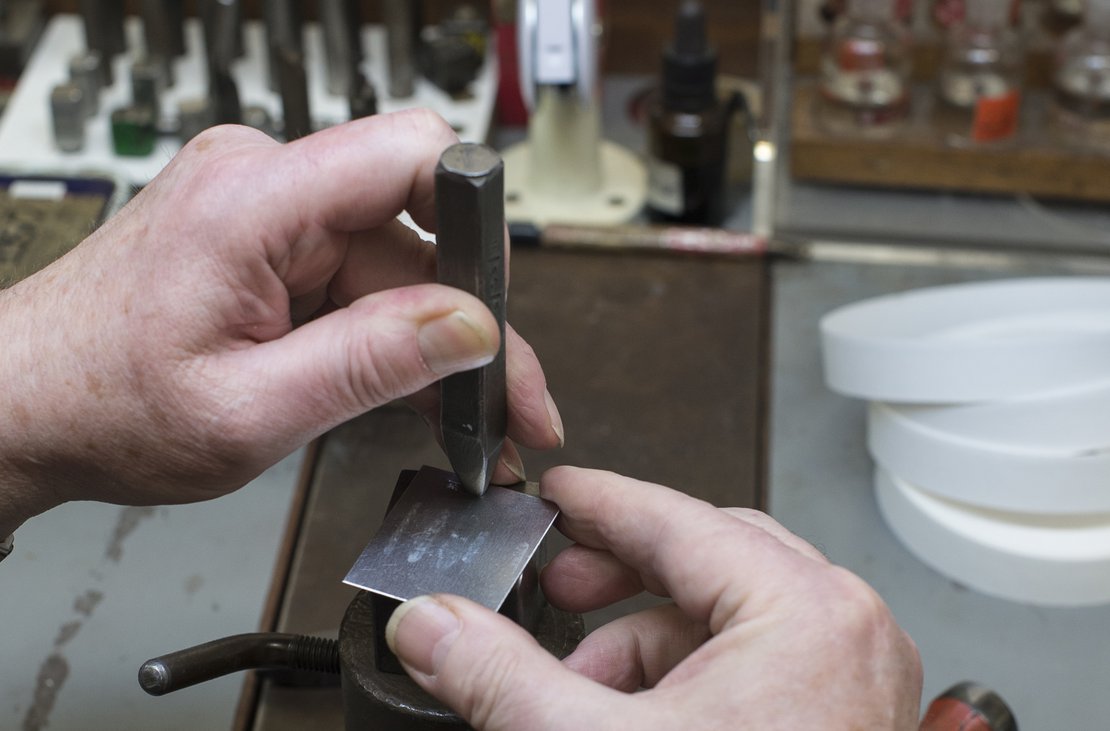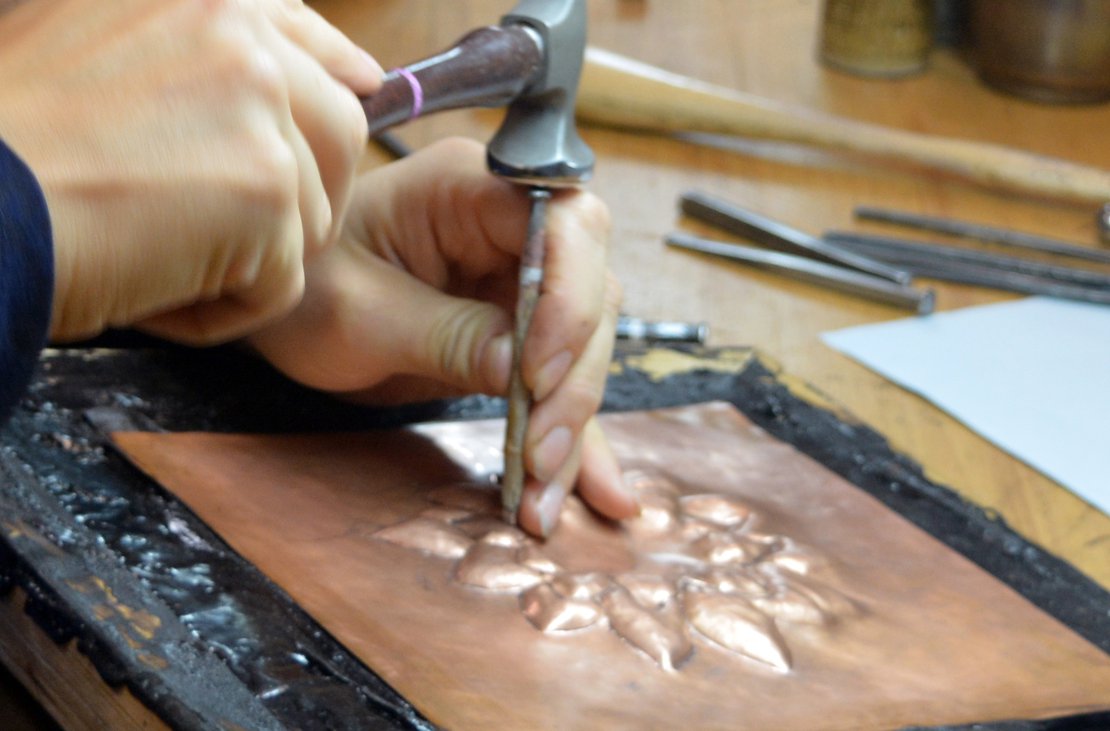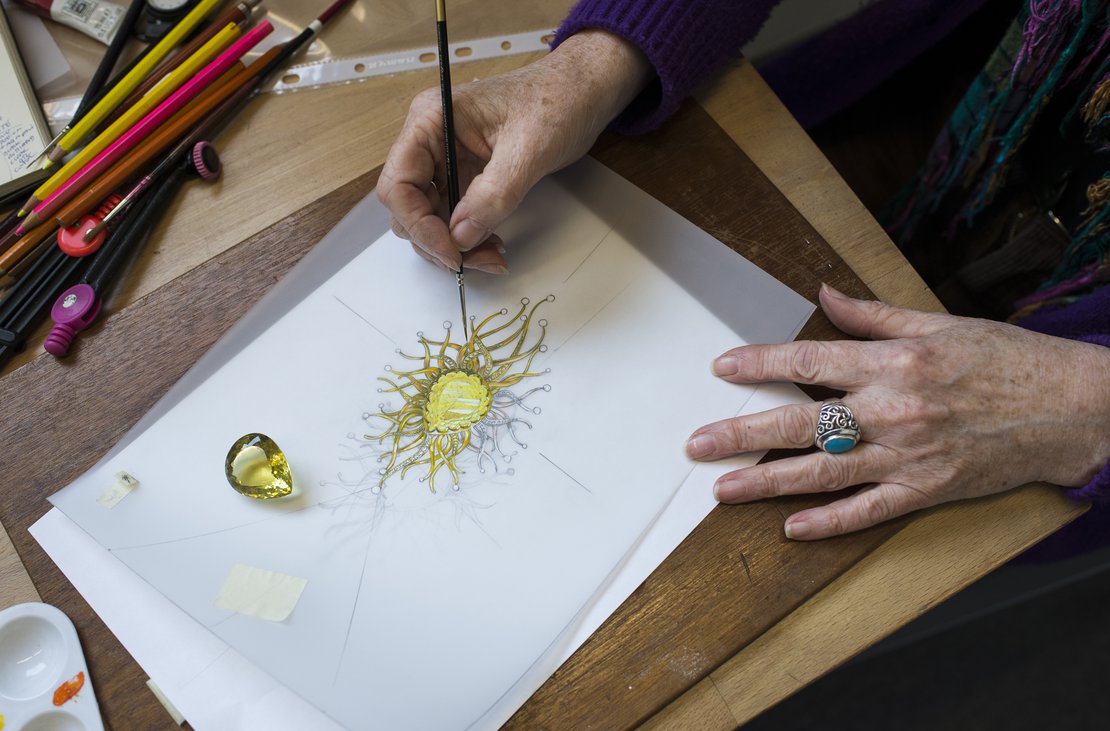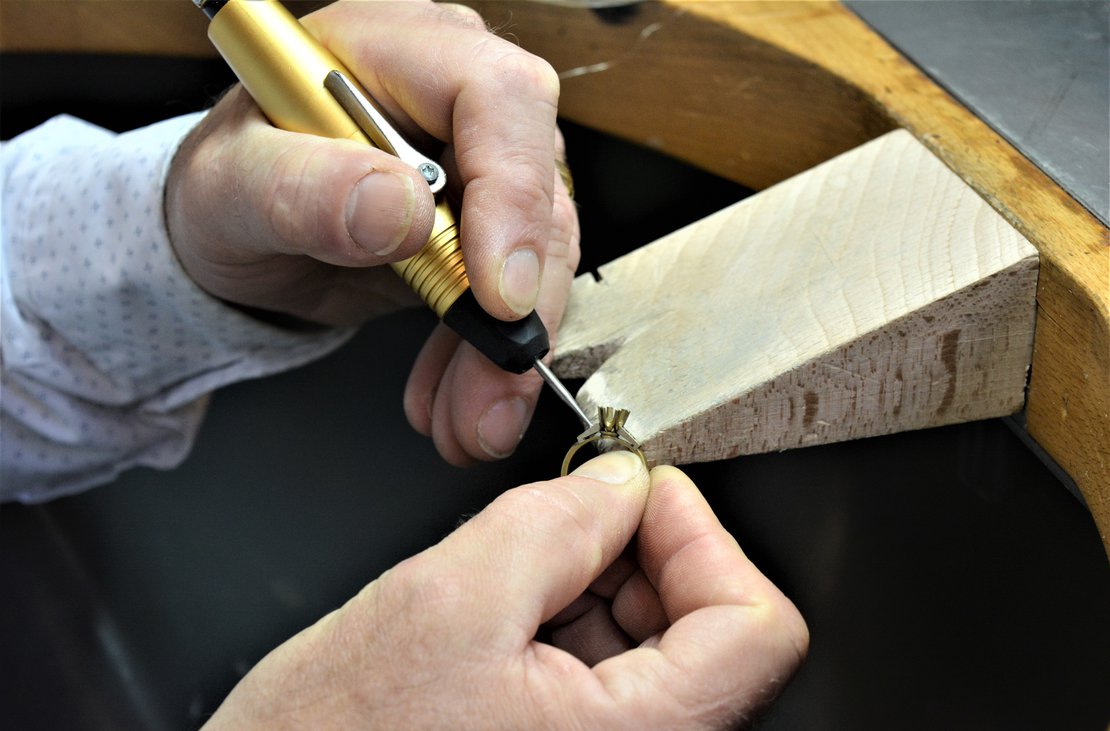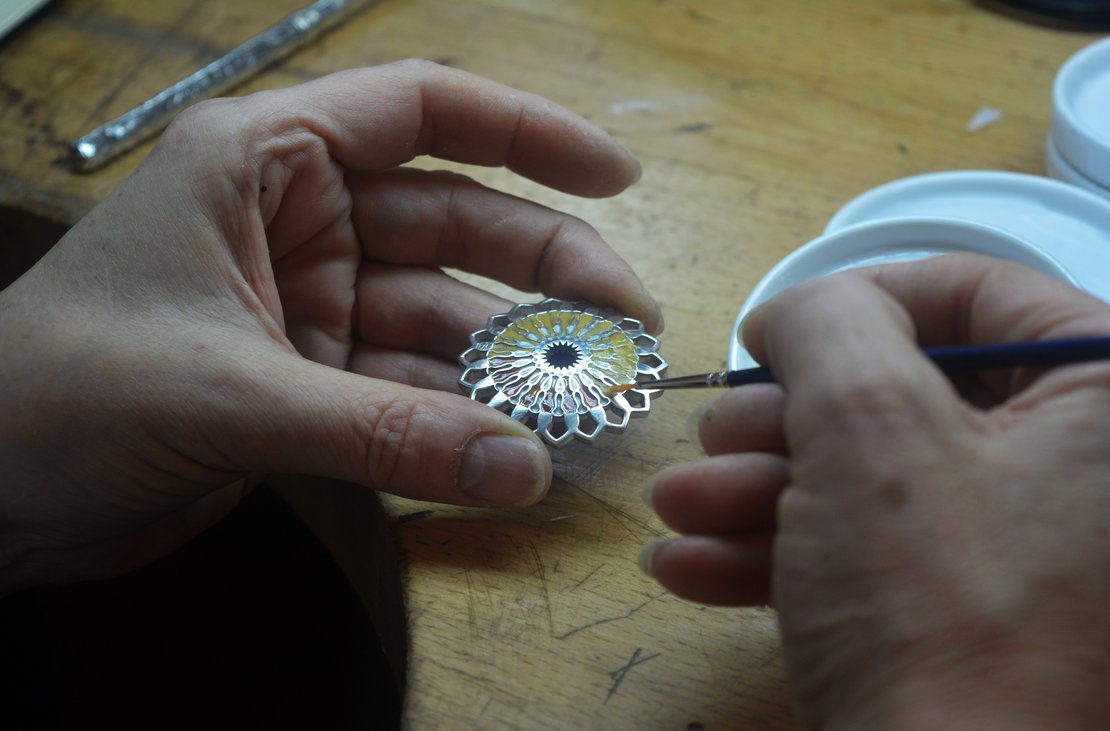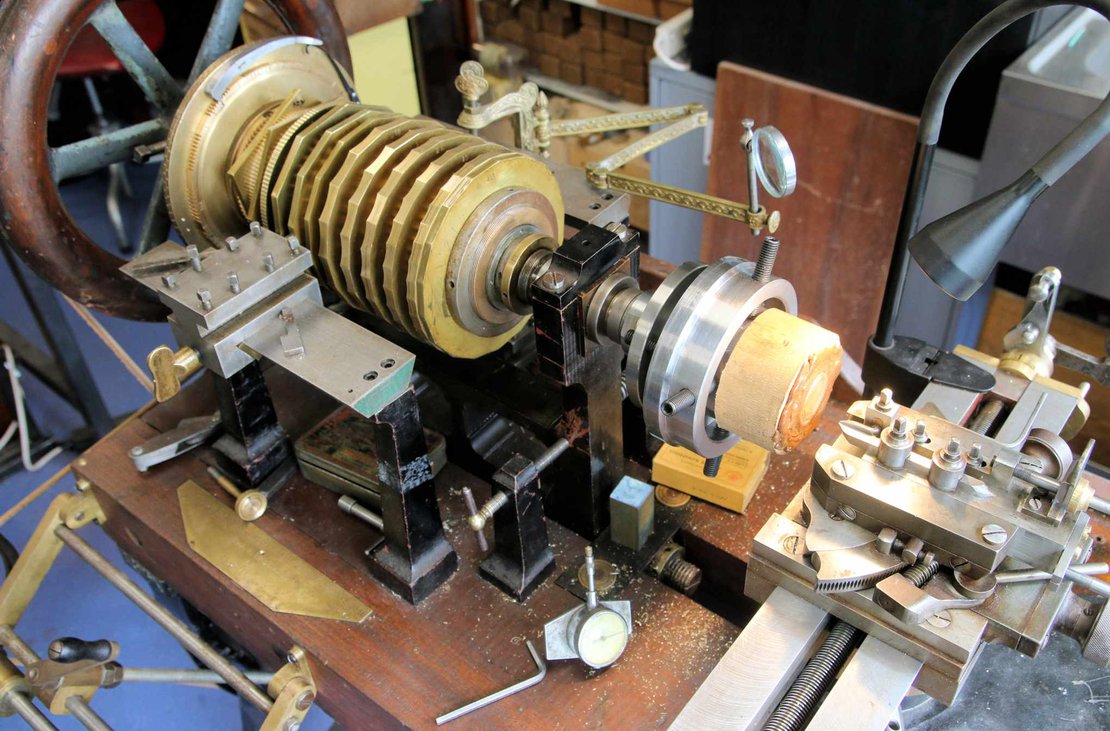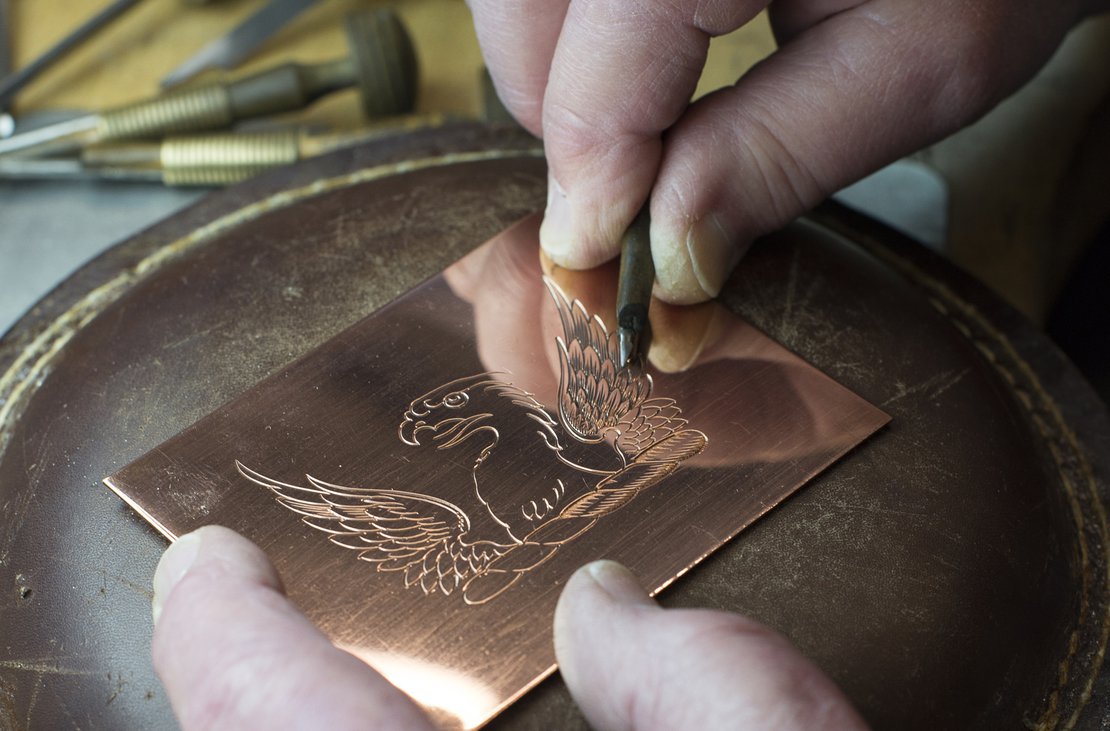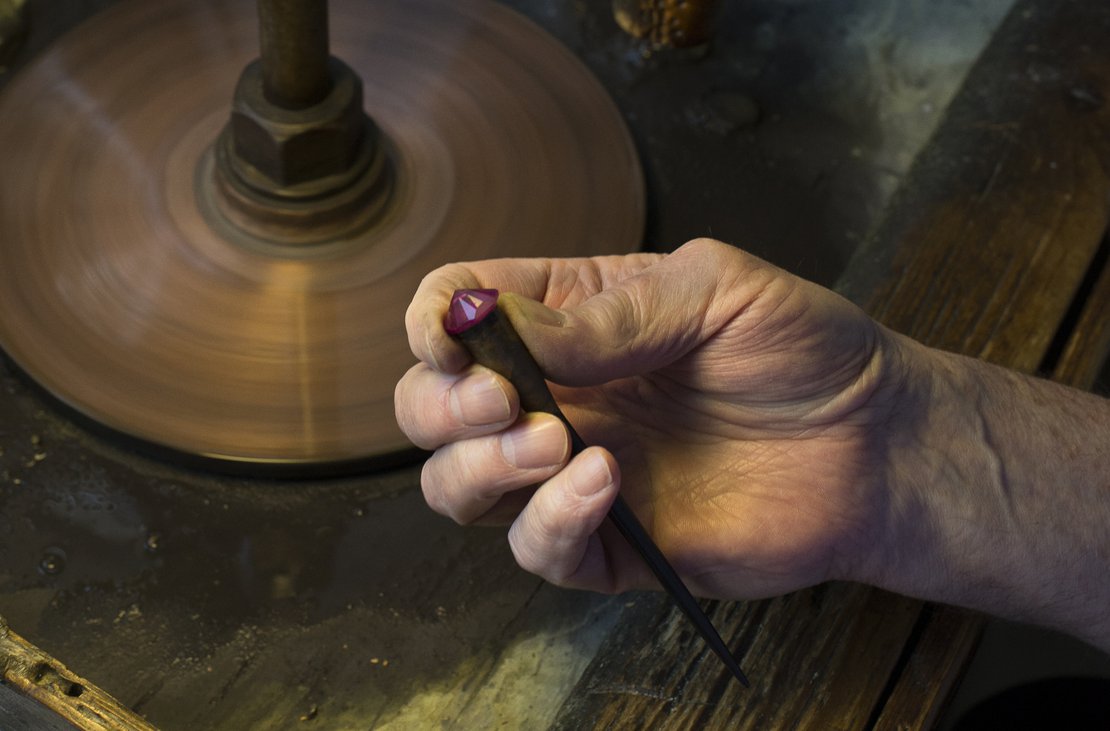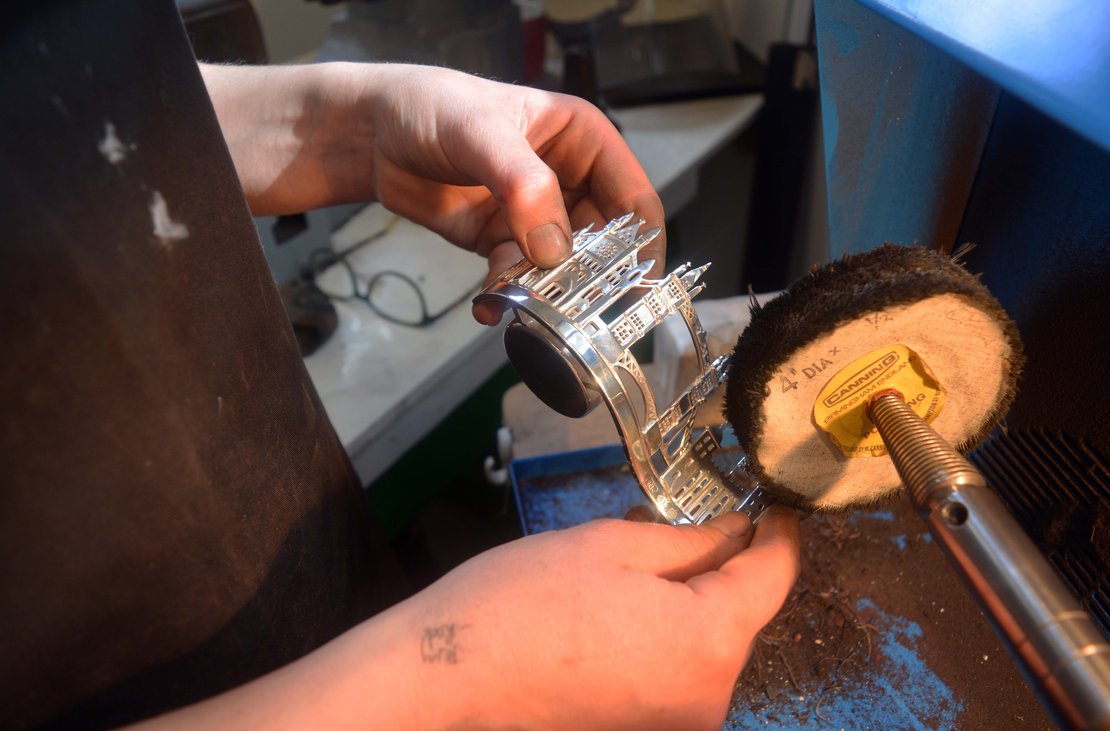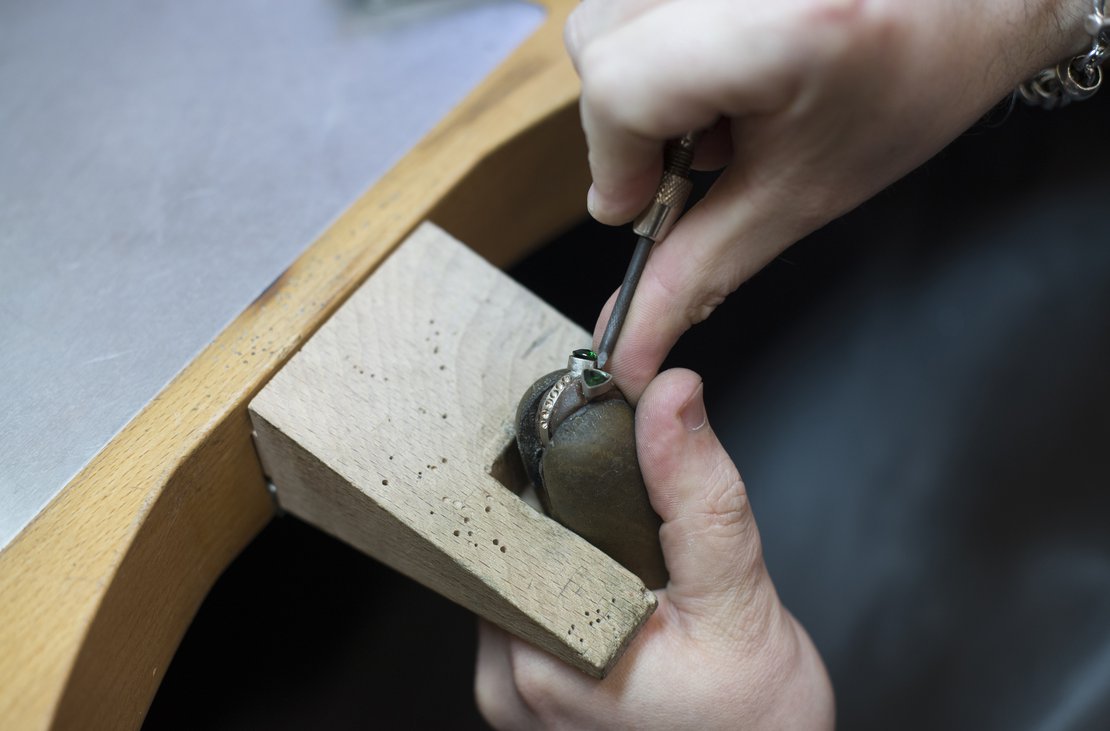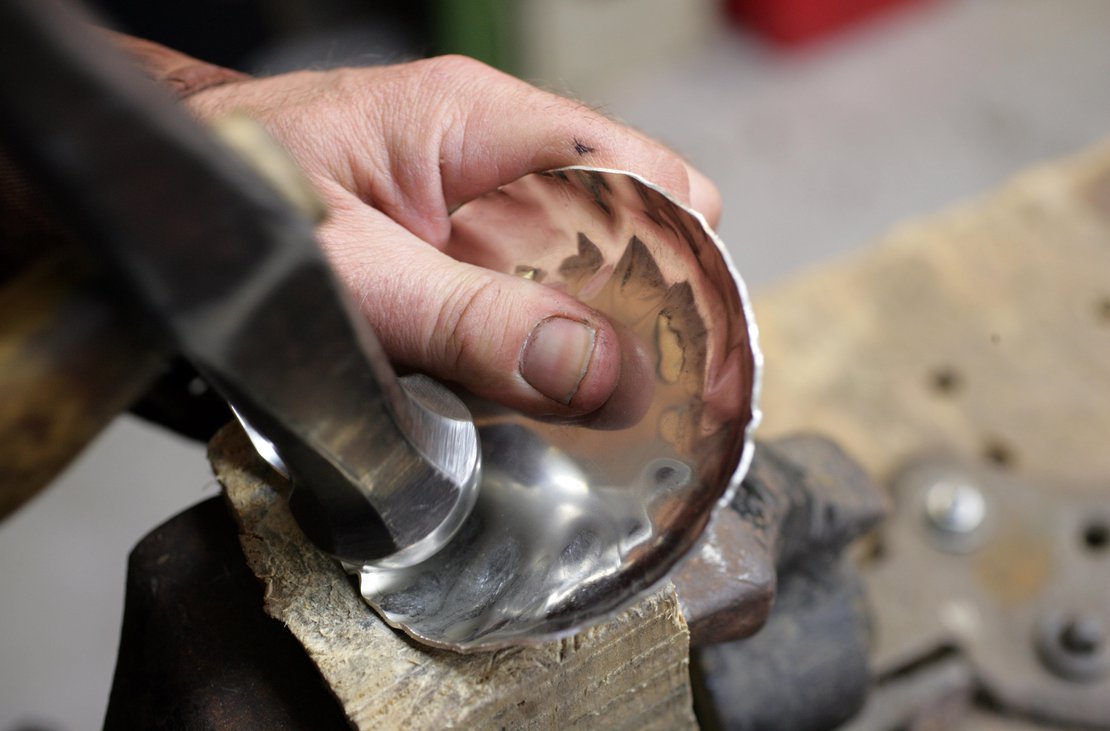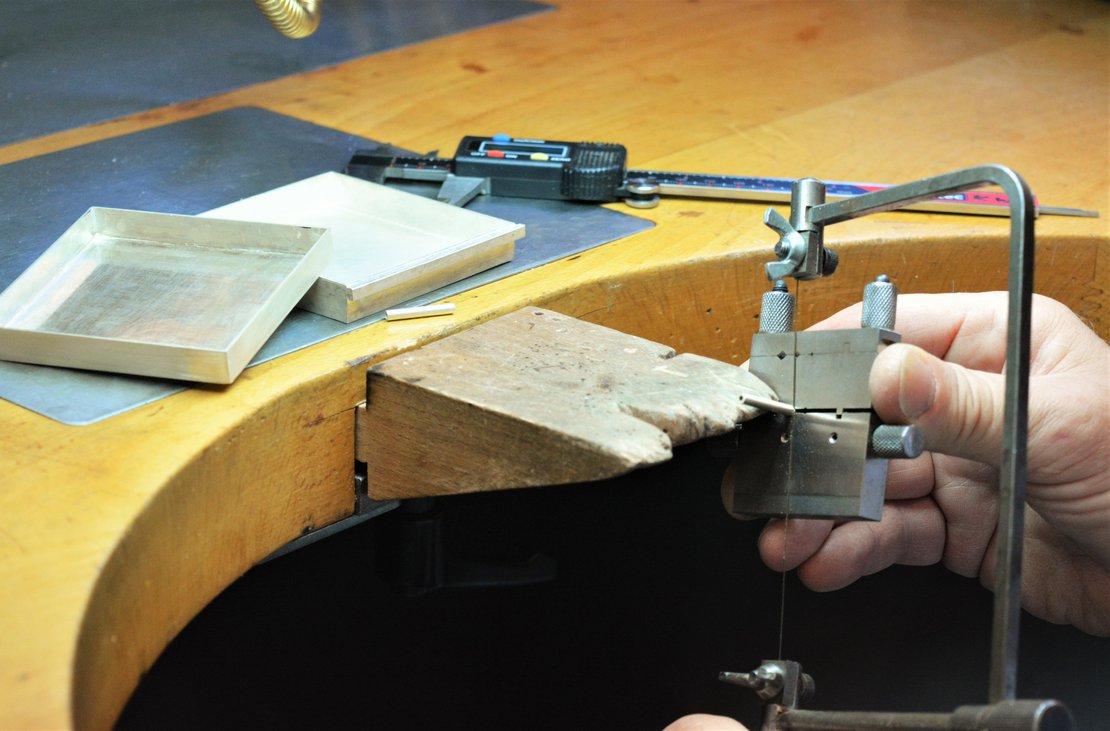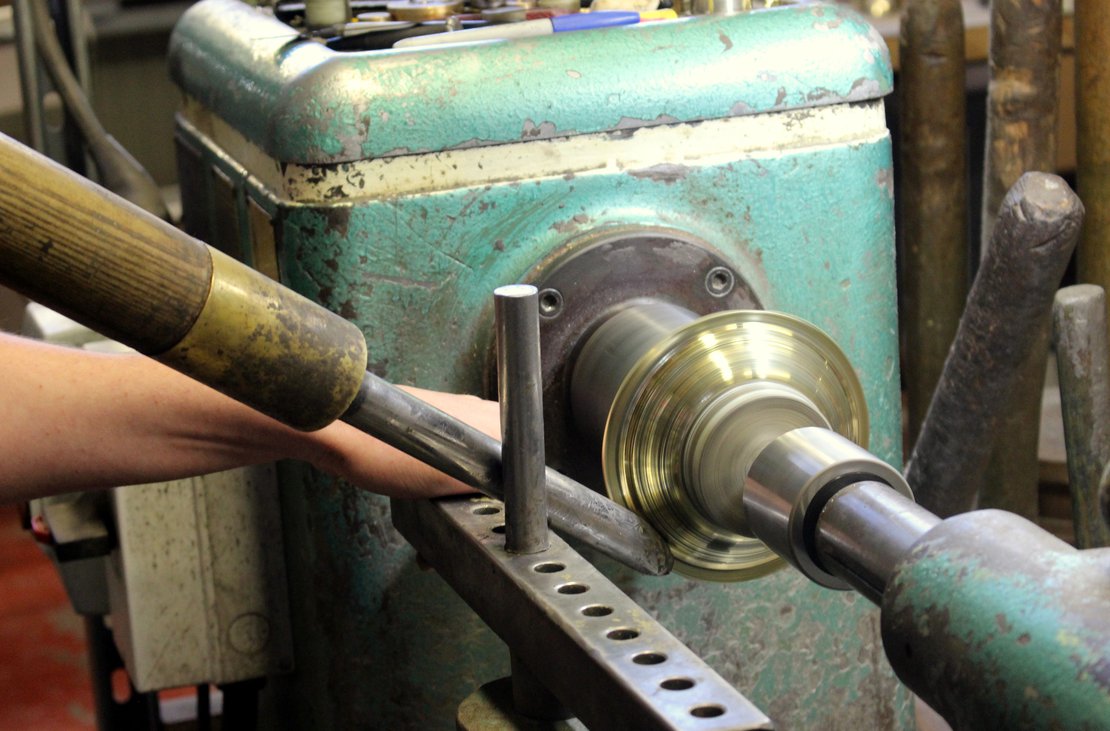Wax Carver
A wax carver is someone who uses wax to produce model pieces of jewellery, silverware or objet d’art. Wax can be carved, sculpted, removed from and added to. Additional processes are required to turn the wax model into a finished metal piece.
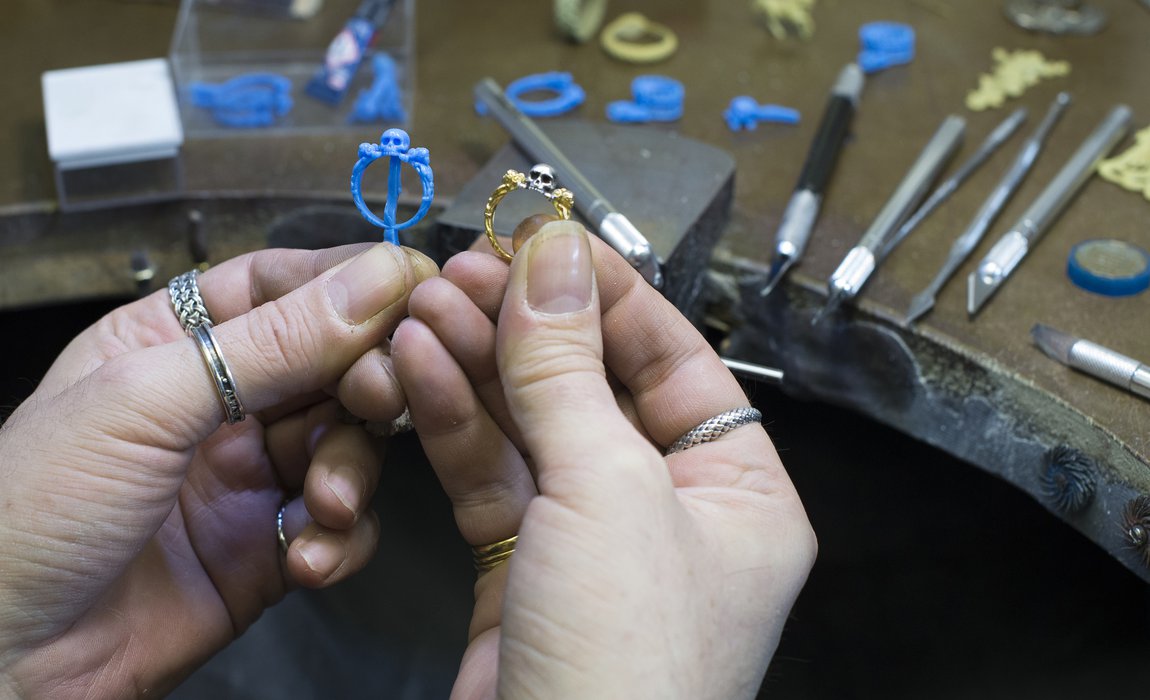
Due to the nature of wax the shapes produced can be natural, sculptural and complex and it can be easier to model using wax than metal. Wax carving can be a good way of developing an idea or adapting a piece of work in a cost-effective way. Once complete, a wax model can be cast into metal using the lost wax casting method. You can then use your new metal master-pattern to produce a mould and cast multiple pieces.
“The first recorded wax carving pieces are dated from around 6,000 years ago.”
What personal attributes are useful for a wax carver?
To be a wax carver you will need to be:
- A creative, artistic and innovative thinker who can turn ideas or designs into 3-D pieces
- Detail orientated – intricate shapes and patterns can be created in wax
- Good at working with your hands – manual dexterity will help you use the various tools required
- Able to adapt and make your own tools for a specific job or pattern
- A perfectionist – whatever you model in wax will be replicated in metal so being accurate is important
- Analytical and a problem solver – one model may require a combination of materials or components to achieve the result you want
- Patient with the ability to work on a project for prolonged periods of time
Wax carvers will benefit from having a range of metalworking skills so that they are able to understand and select the right materials and processes for a specific job – diamond mounting, silversmithing or smallwork skills are useful depending on the scale that you will normally work at. Understanding jewellery, functionality and the form of the body will help you to visualise how a piece will sit when it is worn.
What will my working life be like as a wax carver?
As a wax carver you will likely be working from a bench within a workshop. You can either work for someone and make models on demand or you could be self-employed and make your own wax carved models. Wax carving is normally one of a range of skills used by a craftsperson rather than someone’s full-time job.
If you are employed you should receive a regular wage and have standard working hours, normally Monday to Friday. If you are self-employed you may have your own workshop or share with other craftspeople. As a self-employed outworker you will engage directly with your customers to create bespoke pieces to their requirements. Alternatively, you may design and sell your own pieces online, through a gallery or retail space, or directly to customers at craft fairs for example. In this case you will need to develop good business, finance, marketing and interpersonal skills too.
Within your work you must be able to adhere to industry health and safety requirements including; understanding the safe storage, handling and disposal of harmful materials used in the workshop; understanding the risks involved in heating and melting wax; know how to safely operate and maintain your machines and tools; and learn how to adequately process your materials. As a wax carver you will use skills and techniques including interpreting and executing working drawings; having the ability to work out what materials are required for your project; know the specific uses of different types of waxes and how to work with each to achieve the desired result; understand the lost wax casting process; be able to avoid common pitfalls within your models; and know how to finish resulting metal models.
You will find it useful to maintain a working knowledge of the history and tradition of jewellery, and silversmithing. You can expect to work with all types of wax and modelling materials as well as precious metals once your models have been cast. You will need to learn how to use precise carving tools, needle files, measuring and marking tools - including a ring stick for ensuring ring sizes, heat pen, personal protective equipment, modelling tools, burrs, drills and engraving tools. You should receive training in all of these, as required.
Day in the Life of a Wax Carver - Russell Lownsbrough
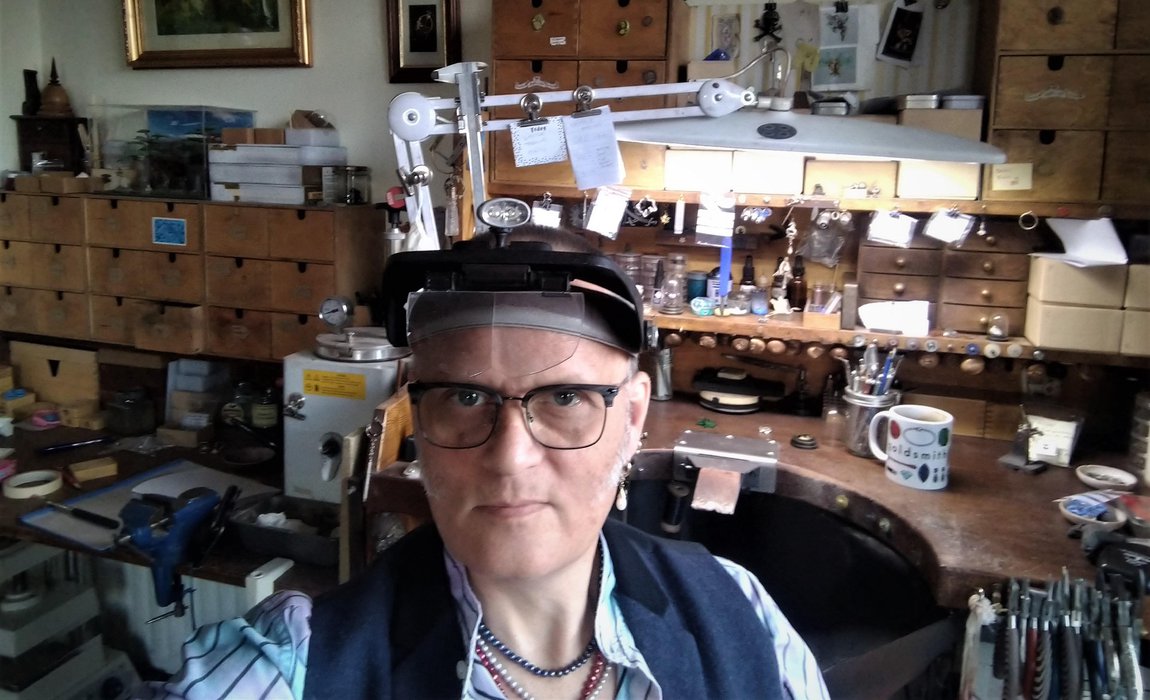 Mug of chai and clean bench. Wax is messy and mess disrupts my focus.
Mug of chai and clean bench. Wax is messy and mess disrupts my focus.
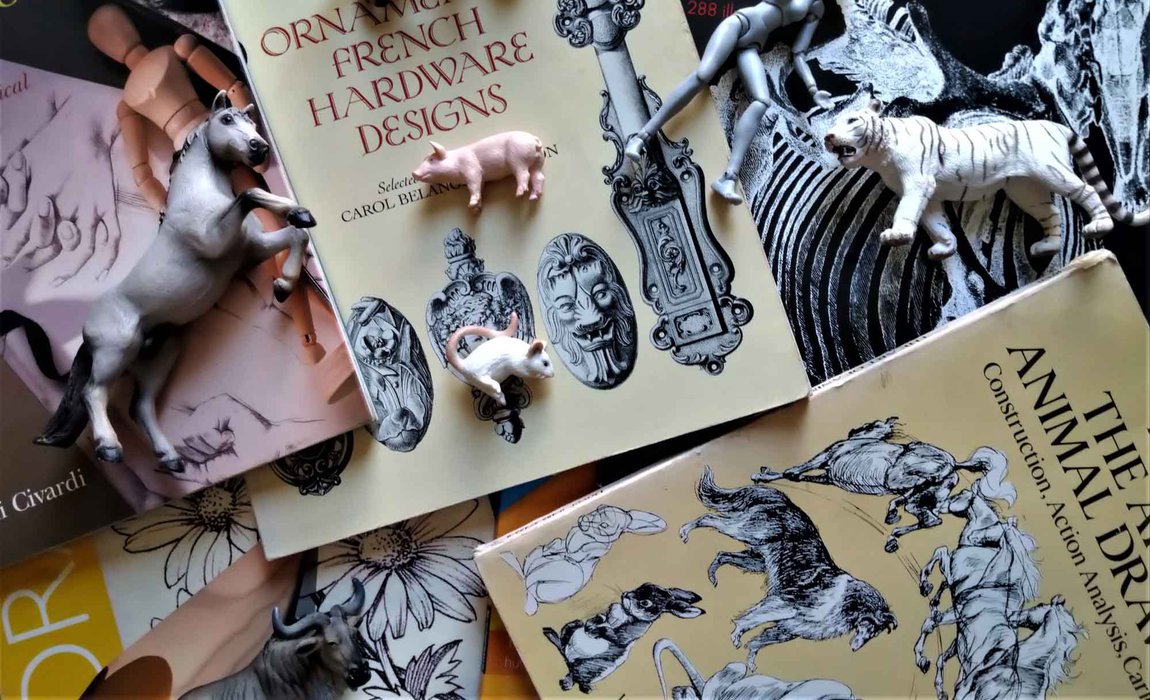 Visual research. Essential for figurative work. Google, books and models are your friends.
Visual research. Essential for figurative work. Google, books and models are your friends.
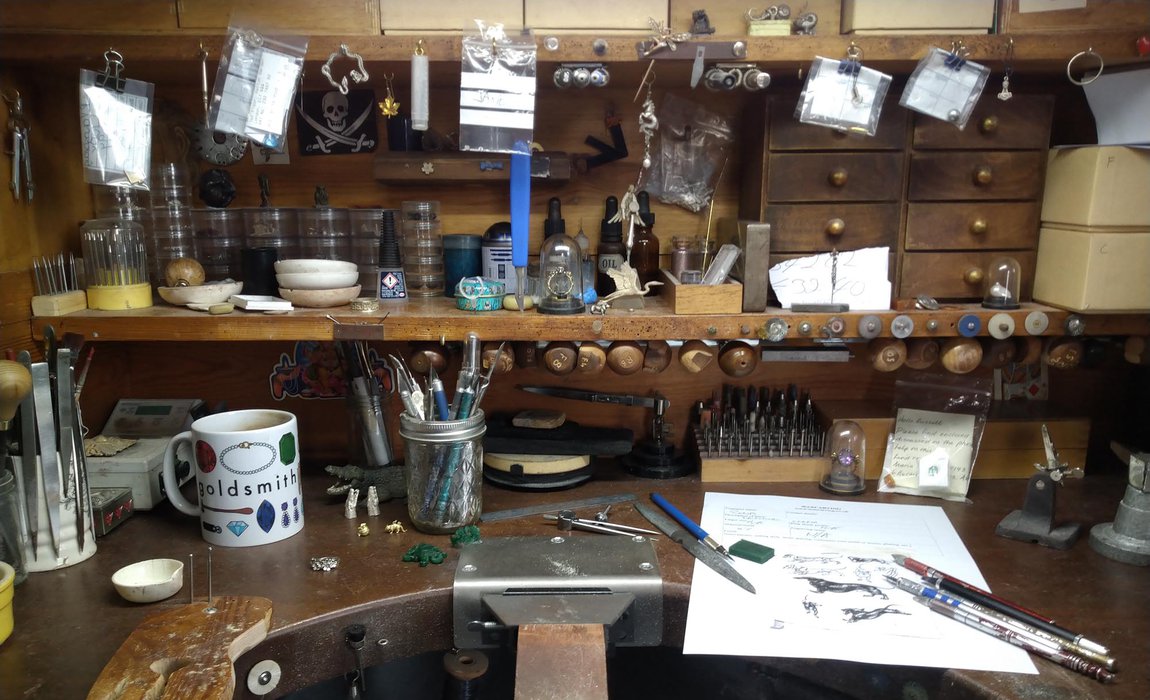 Prioritise. Deadlines, preferences, personal projects (if time permits), in that order.
Prioritise. Deadlines, preferences, personal projects (if time permits), in that order.
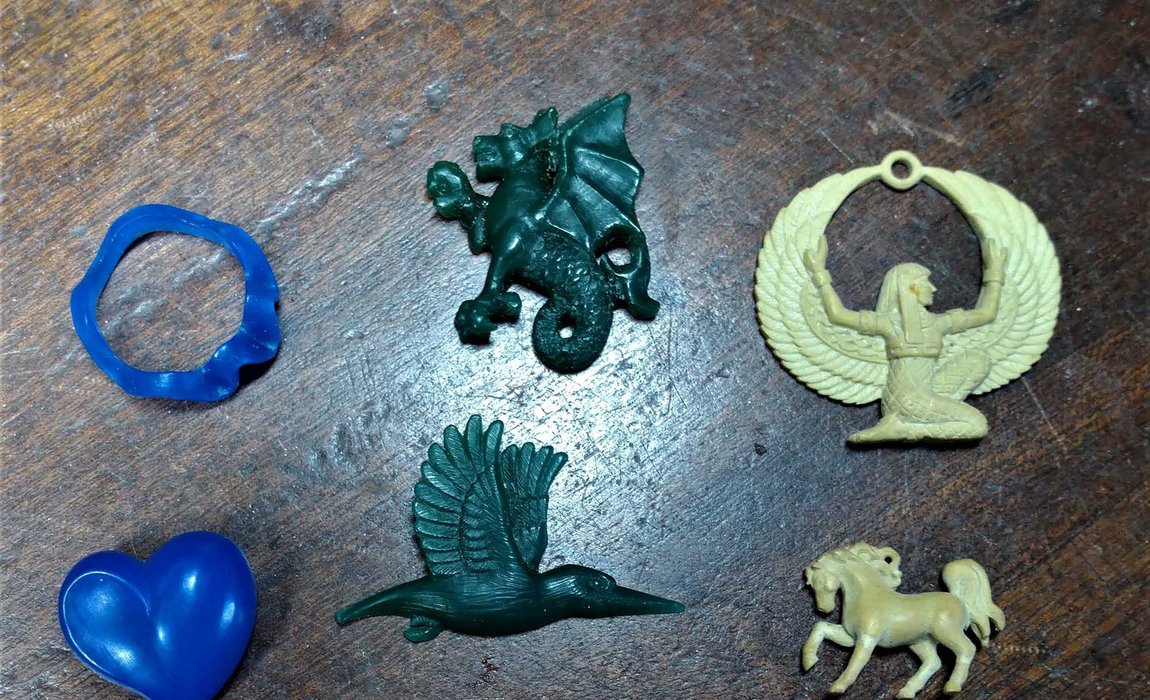 Select material. Blue wax for simple forms, green wax or Milliput for fine detail.
Select material. Blue wax for simple forms, green wax or Milliput for fine detail.
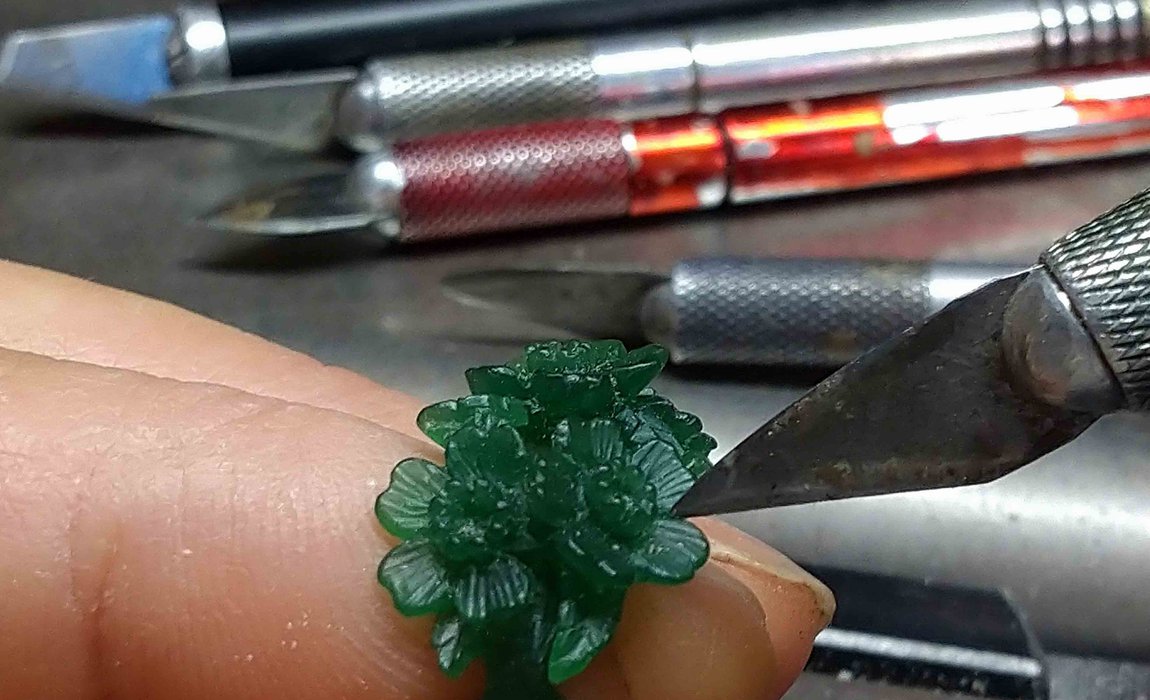 Put on some music, get in the zone and carve. Remember to eat, body needs fuel.
Put on some music, get in the zone and carve. Remember to eat, body needs fuel.
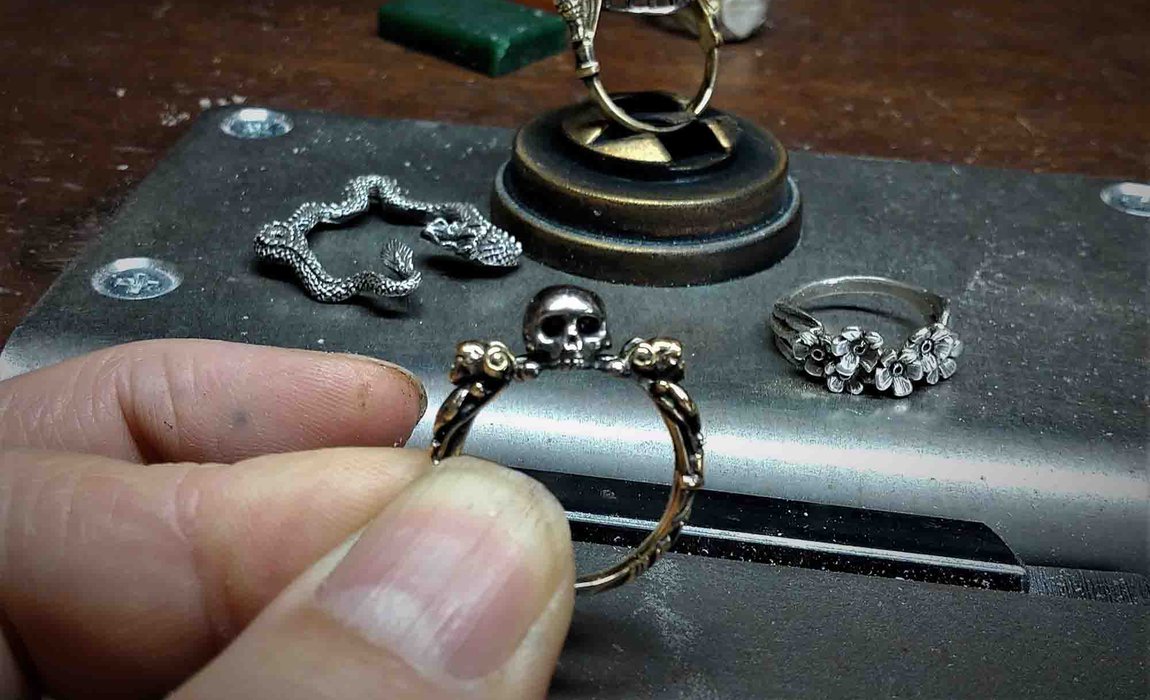 I love working in antique styles. Here's my 17th century baroque Memento mori ring.
I love working in antique styles. Here's my 17th century baroque Memento mori ring.
Day in the Life of a Jeweller - Clio Saskia
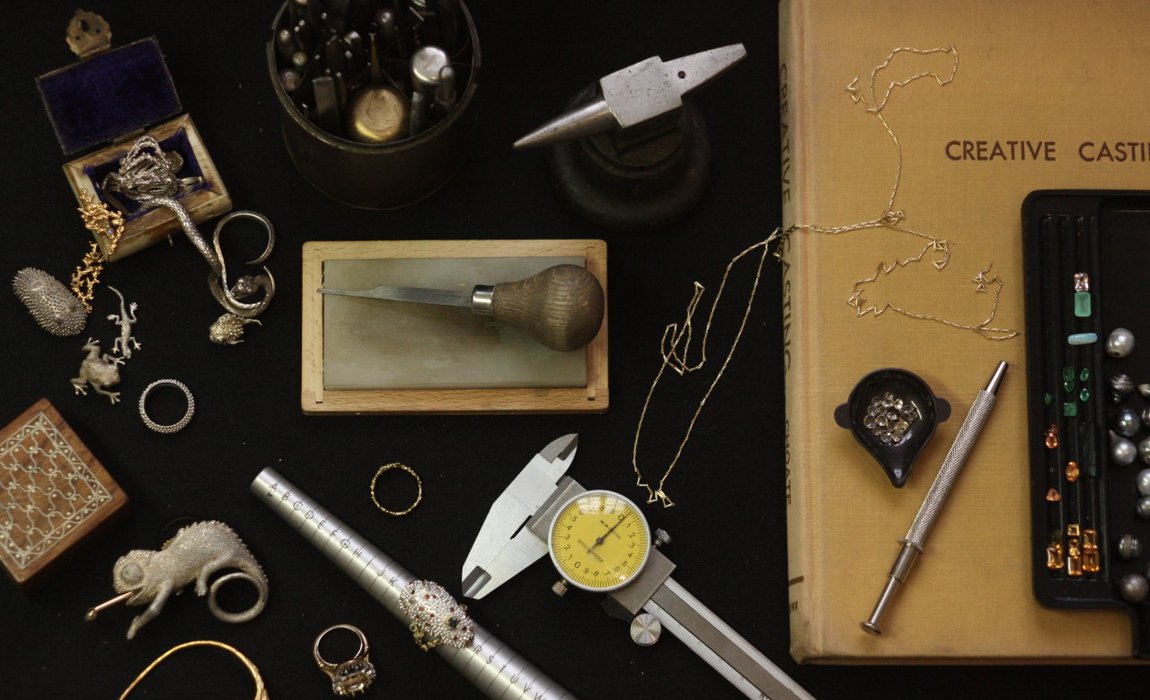 My day starts with planning the projects currently in progress, including design development, carving, arranging client meetings, sourcing supplies.
My day starts with planning the projects currently in progress, including design development, carving, arranging client meetings, sourcing supplies.
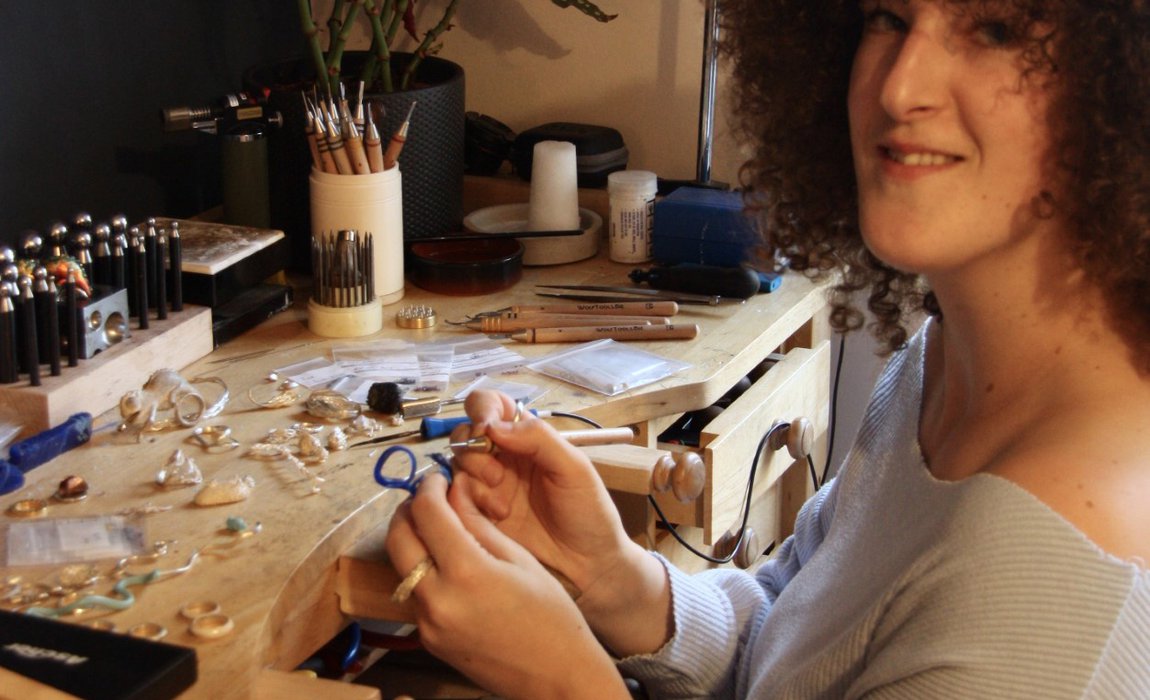 Multitasking is key. There are few days where you sit at the bench and only carve your own ideas, as there are many moving parts to this career.
Multitasking is key. There are few days where you sit at the bench and only carve your own ideas, as there are many moving parts to this career.
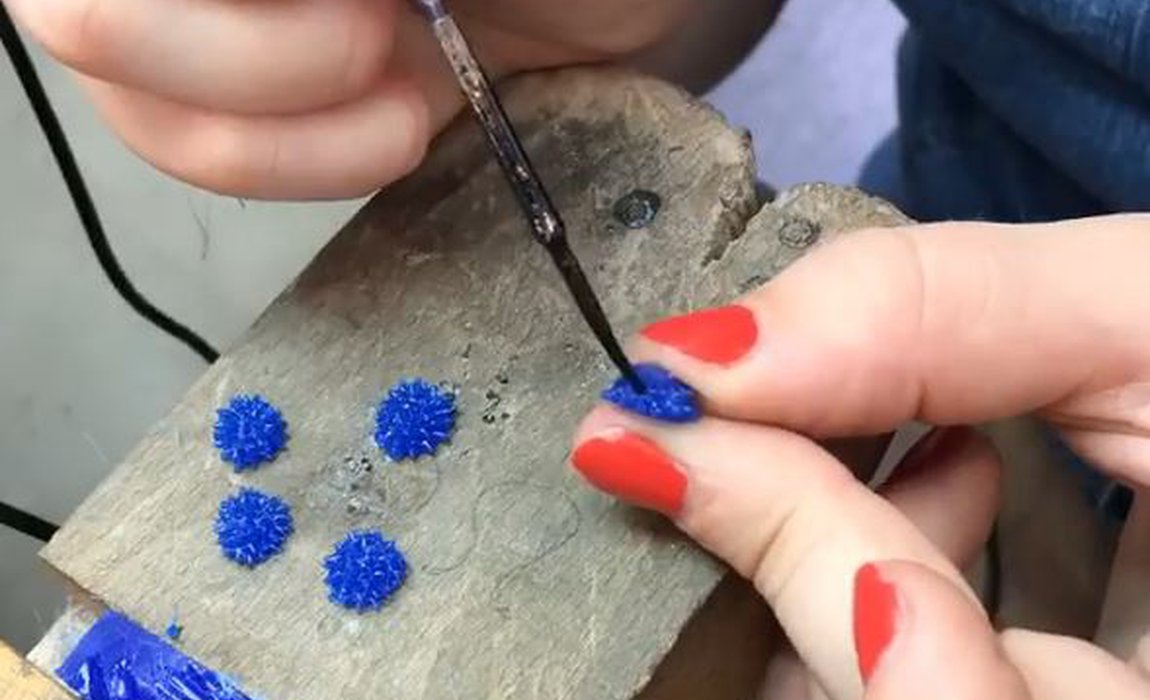 The blue wax is kind of a general, all-purpose wax, and is medium hardness and flows well when heated.
The blue wax is kind of a general, all-purpose wax, and is medium hardness and flows well when heated.
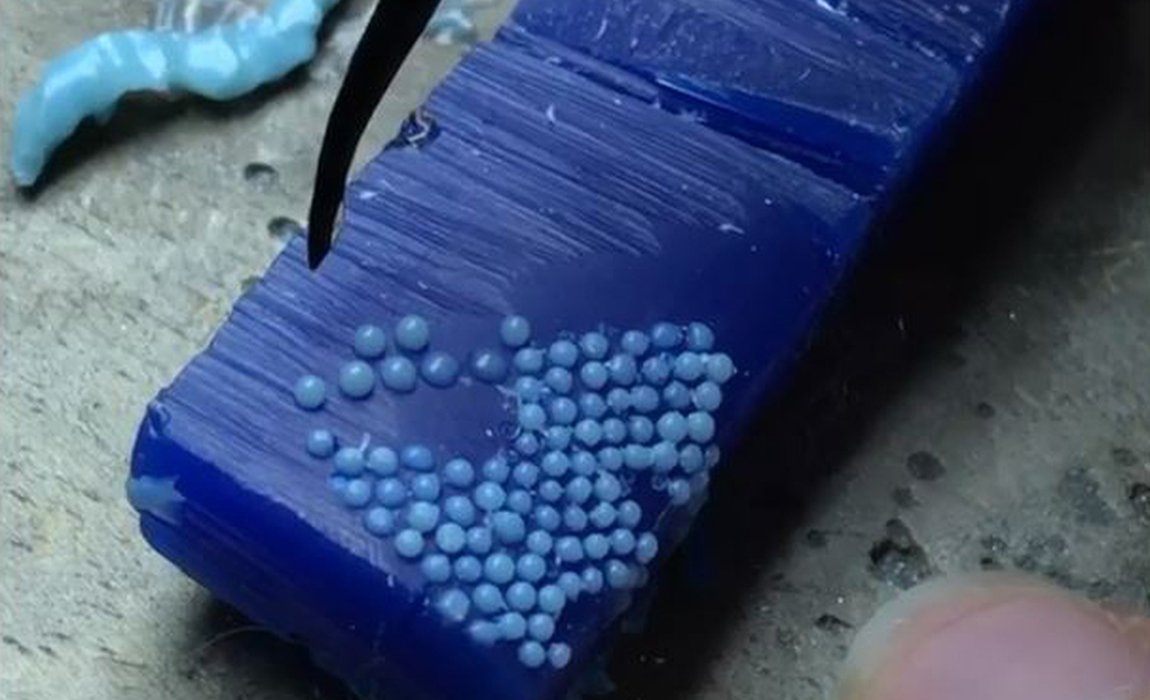 Wax is a very versatile and forgiving medium, which allows for a lot of experimentation and freedom in designs.
Wax is a very versatile and forgiving medium, which allows for a lot of experimentation and freedom in designs.
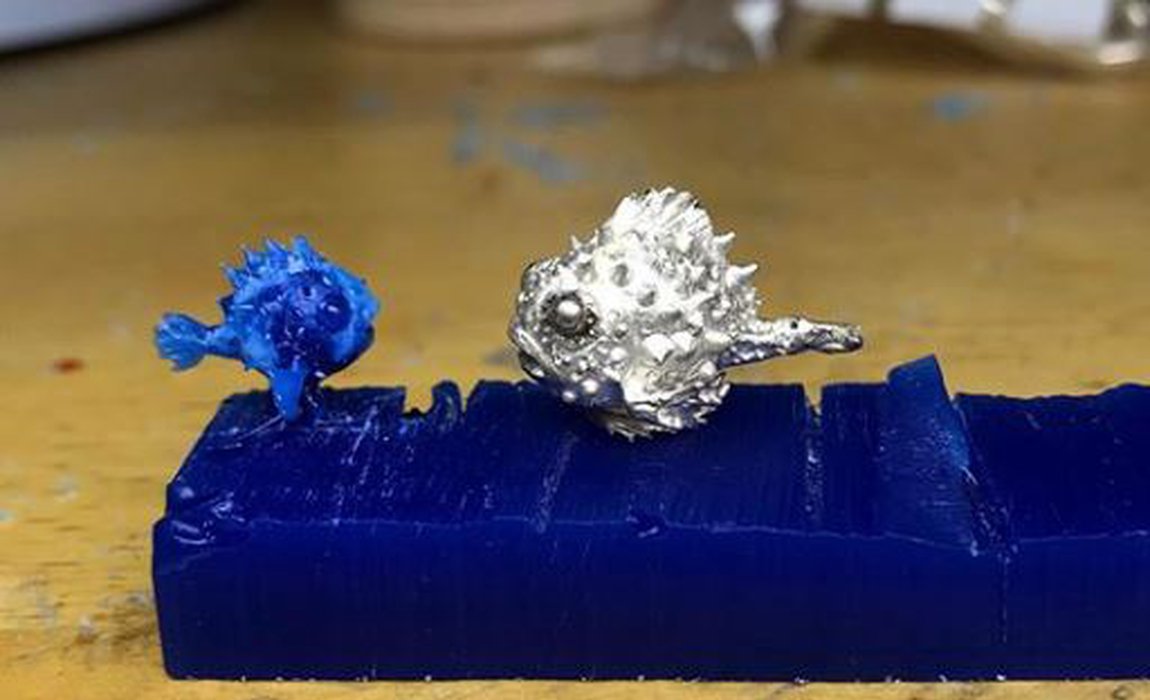 To test ideas, I cast my carvings in base metals such as brass or bronze. This gives you a good idea of whether the design will work well in metal.
To test ideas, I cast my carvings in base metals such as brass or bronze. This gives you a good idea of whether the design will work well in metal.
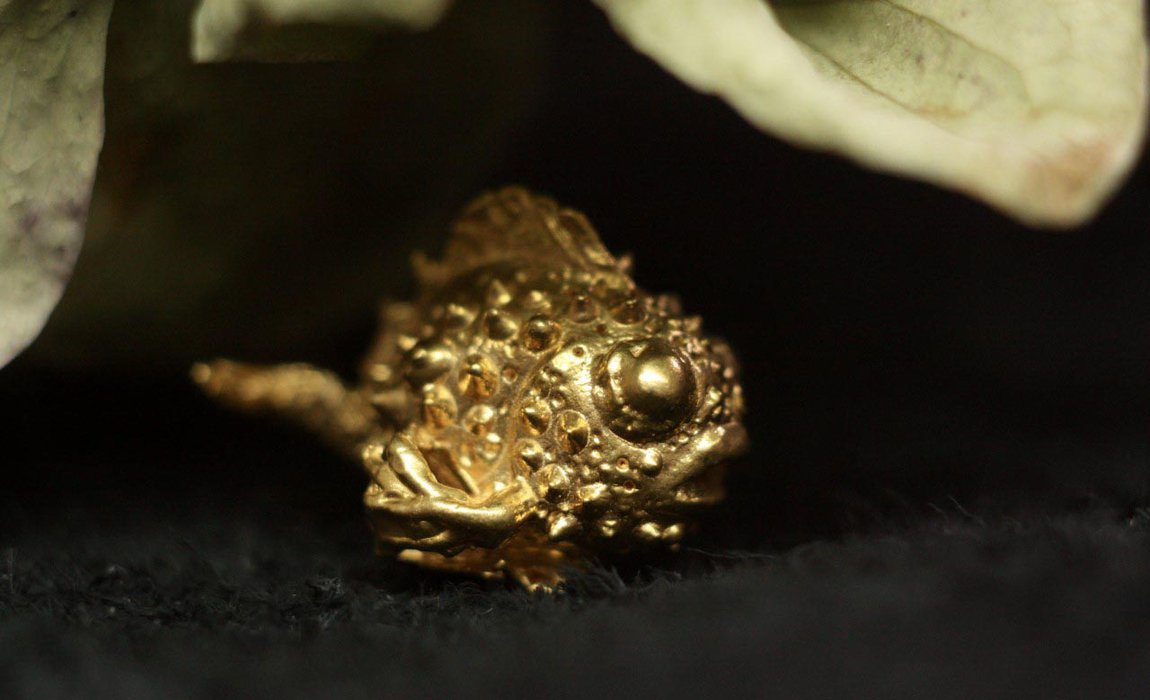 Out of the various designs I make for clients, there are some I create for my own collection that I treasure, such as the Pacific Spiny Lumpsucker.
Out of the various designs I make for clients, there are some I create for my own collection that I treasure, such as the Pacific Spiny Lumpsucker.
Training or Qualifications: How can I become a wax carver?
There are no specific academic qualifications required to become a wax carver. As it is a practical skill you should be prepared to learn through many hours of practice and perseverance and a commitment to continuously learn from those that are more skilled will stand you in good stead.
Taught short courses and self-directed learning in wax carving is available whilst some apprenticeships, HND courses or degrees in jewellery, silversmithing or related fields will provide you with an introduction to wax carving skills.
There are several ways to start out in the jewellery, silversmithing and allied industries. Some people will choose to go straight into a job whereas others may wish to learn their skills via an apprenticeship or courses at a college, university or training centre. There are very few skill-specific qualifications available, but many courses provide an introduction to a range of creative skills. To find out more about different options and your potential route into a creative career within the goldsmithing industry see Training and Qualifications: How to Start in Jewellery, Silversmithing and the Allied Industries.
What can I earn as a wax carver?
As an apprentice or someone who is training you should be paid at least the National Minimum Wage for your age and this rate should increase as you get closer to completing your training. Apprentices undertaking traditional training may start out earning around £13,000 – £14,000 per year and be closer to £20,000 – £21,000 at the end of their four-year apprenticeship. Once you have completed your training your earnings will vary depending on your skill and employment status.
Wax carving is a niche skill and there are a limited number of practitioners within the UK. If you are considering becoming a wax carver you may wish to train in a complementary skill such as diamond mounting, silversmithing or smallwork as these may help ensure you are more widely employable.
It is unlikely that you will be employed as a full-time wax carver but craftspeople who do wax carving as part of their wider work may expect to be paid around £22,000 - £25,000 per year in the first few years after training. This can rise to £28,000 - £35,000 for mid-career craftspeople and can reach £35,000 - £40,000 for the most experienced and skilled makers working for a top company.
If you are self-employed, being a craftsperson can be well paid if you have regular clients or constant sources of work, but it can be difficult if you are commissioned ad hoc. Wax carvers will often work on a commission basis and agree a fee per job, per hour or per day. Rates for this will depend on your experience, the type or complexity of the piece and the size or materials being used. No matter how you work your reputation is extremely important as the goldsmithing industry often operates on word-of-mouth recommendations and trust.
What industry membership bodies can I join?
The Goldsmiths’ Centre offers a range of membership options for people at different stages of their career. Joining a membership body or keeping up to date with industry events allows you to create a network with like-minded individuals. They might also run workshops to acquire new skills. See for example:
The Goldsmiths’ Centre
Association for Contemporary Jewellery
Cockpit Arts
Craft Central
Crafts Council
Craft Northern Ireland
Institute of Professional Goldsmiths
National Association of Jewellers
Sarabande
Scottish Goldsmiths Trust
Society of Jewellery Historians
The Silver Society
Meet the makers

There’s a never-ending variety of things that you can create or be inspired by - the whole planet, the entirety of nature and all of the history of art are your playthings.
Russell Lownsbrough
Read our interview with Russell Lownsbrough on what is wax carving
If you want to start wax carving, it’s actually one of the cheapest ways to make jewellery. You can buy blocks of wax and a dentist’s steel toolkit. You can use these to carve out different forms and shapes.
Examples of wax carving
The Goldsmiths’ Company Collection includes over 8,000 pieces of antique, domestic & contemporary silver, jewellery and art medals which were made in Britain between 1350 and the present day. The Company continues to purchase, and commission pieces each year and new contemporary pieces must demonstrate innovative design combined with excellent craftsmanship. Pieces are acquired from both established craftspeople and rising stars.
The Goldsmiths’ Company also retains an image archive of Masterpieces created by apprentices in their final year on the Goldsmiths’ Company Apprenticeship Scheme. These pieces take around 350 hours to make and demonstrate the skills learnt throughout an apprentice’s training. A selection of these pieces, which demonstrate wax carving can be seen here:
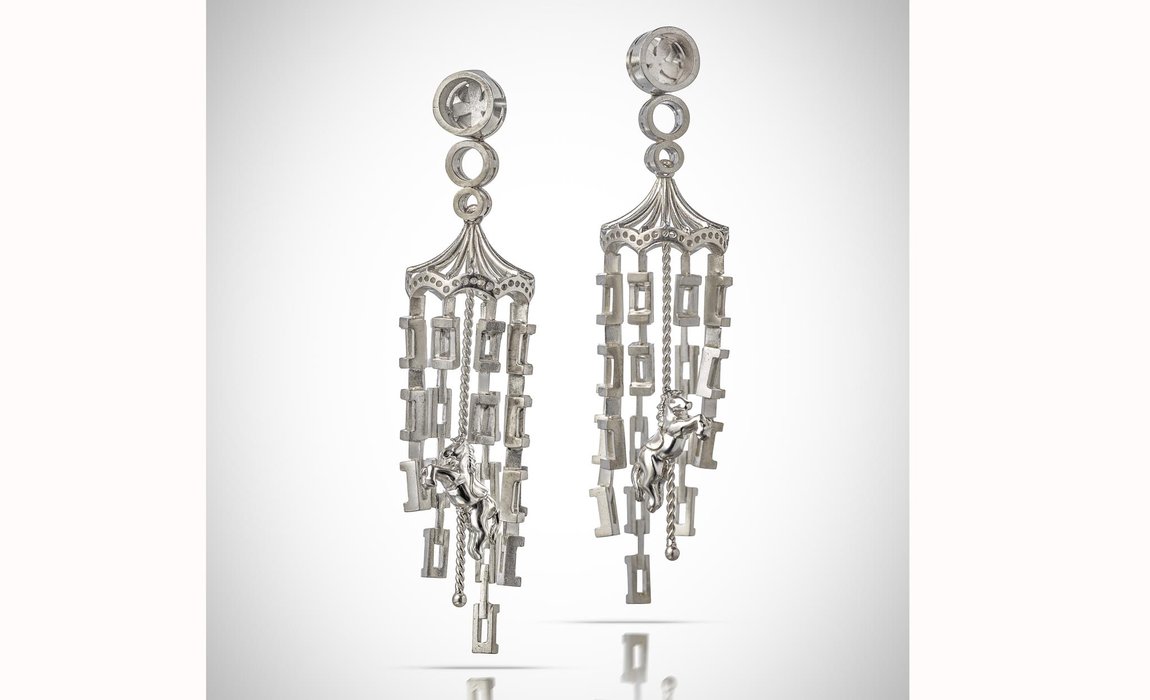 Wax carved horses - Adriana Klimentjevaite (Anton Kata, Kata Jewellery) Carousel Chandelier Earrings © The Goldsmiths' Company 2020
Wax carved horses - Adriana Klimentjevaite (Anton Kata, Kata Jewellery) Carousel Chandelier Earrings © The Goldsmiths' Company 2020
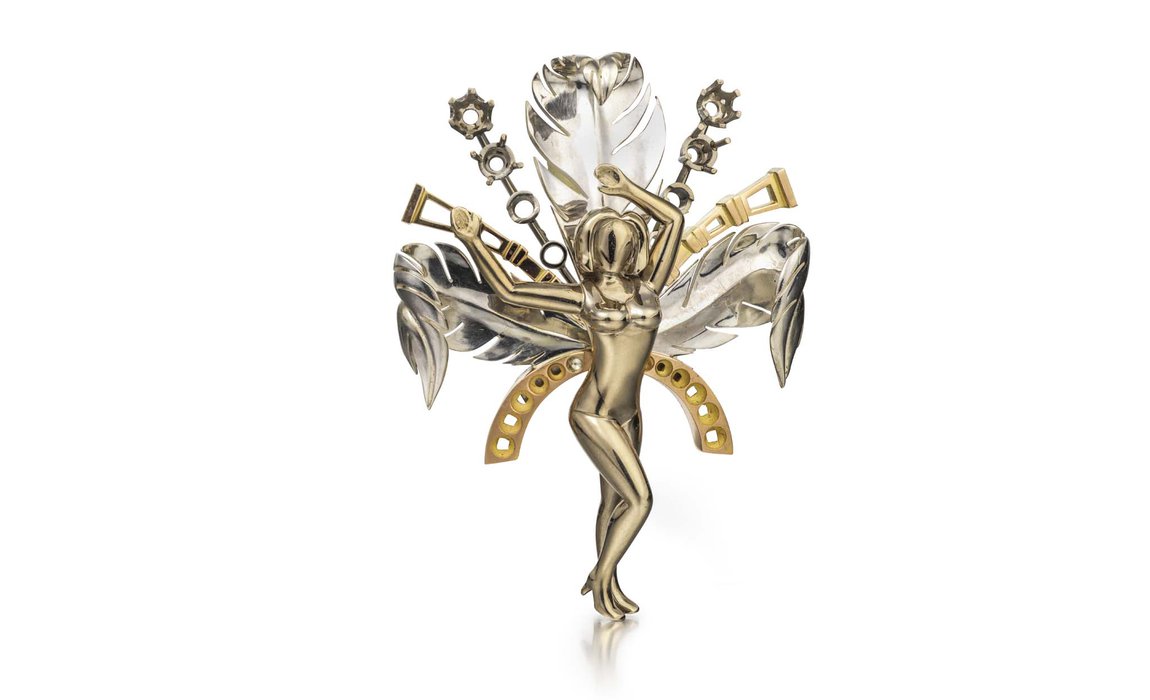 Wax carved lady - Luiz Goncalves Mendes (David Marshall, The London Artworks Ltd) Carnival Dancing Lady © The Goldsmiths’ Company 2018
Wax carved lady - Luiz Goncalves Mendes (David Marshall, The London Artworks Ltd) Carnival Dancing Lady © The Goldsmiths’ Company 2018
Further information
There are many reputable sources of information relating to the jewellery, silversmithing and allied industries. Whether you are trying to find information on technical skills, processes, materials, makers or inspiration some resources relating to wax carving can be found below:
The Goldsmiths’ Company Library is the UK’s largest specialist library for jewellery, silversmithing and hallmarking open to the public. Its collections includes 8,000+ books and 15,000+ images; magazines and journals; films; special research collections; and subject files on a wide range of industry-related topics. The Library is also responsible for the Company’s archives, which date back to the 14th century and include design drawings produced during the early and mid-twentieth century by British or UK-based craftspeople. You can email library staff directly to ask for advice about finding information or start by looking at the online catalogue.
Wax carving-related books or archived materials include:
- Russell Lownsbrough and Danila Tarcinale, Wax carving for jewellers, Ramsbury, The Crowood Press, 2021.
Wax carving related articles include:
What is Wax Carving? With jeweller Clio Saskia
What is Wax Carving? With award winning artist-craftsperson Russell Lownsbrough
Modelling: An Introduction to the Production of Waxes for Use with Casting
Modelling: An Introduction to Silicone Rubber Moulding
Modelling: An Introduction to Making Master Patterns
Modelling - What Materials Are Available and How Do They Differ
